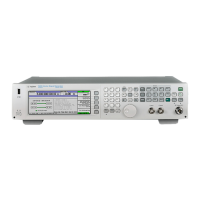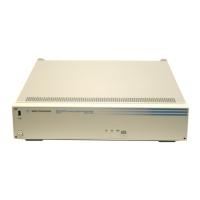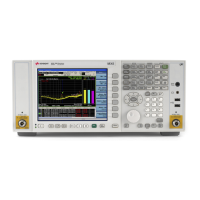98 Agilent N5181A/82A MXG Signal Generators User’s Guide
Basic Digital Operation (Option 651/652/654)
Triggering a Waveform
Triggering a Waveform
Figure 8-8 Triggering Softkeys
Triggers control data transmission by controlling when the signal generator transmits the modulating
signal. You can configure trigger settings so that data transmission occurs once (Single mode),
continuously (Continuous mode), or starts and stops repeatedly (Gated and Segment Advance modes).
A trigger signal contains both positive and negative states; you can use either for triggering.
When you initially select a trigger mode or when you change from one triggering mode to another,
you may lose the carrier signal at the RF output until the modulating signal is triggered. This is
because the signal generator sets the I and Q signals to zero volts prior to the first trigger event. To
maintain the carrier signal at the RF output, create a data pattern with the initial I and Q voltages
set to values other than zero.
There are two parts to configuring a waveform trigger:
• Type determines the behavior of the waveform when it plays (see Trigger Type on page 99).
• Source determines how the signal generator receives the trigger that starts the modulating
waveform playing (see Trigger Source on page 100).
Mode > Dual ARB >
See page 99
See
For details on each key, use key help
as described on page 23.

